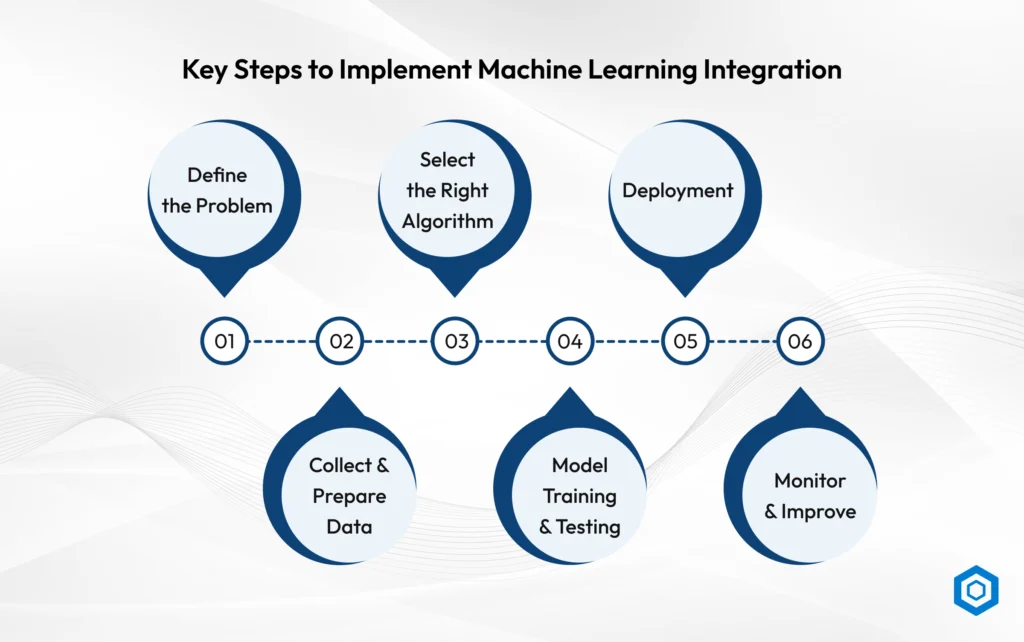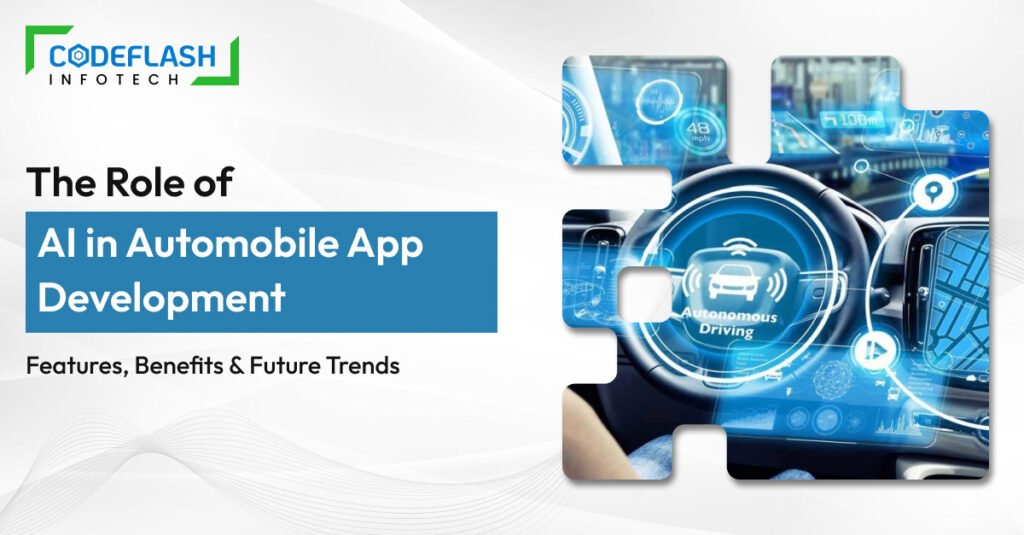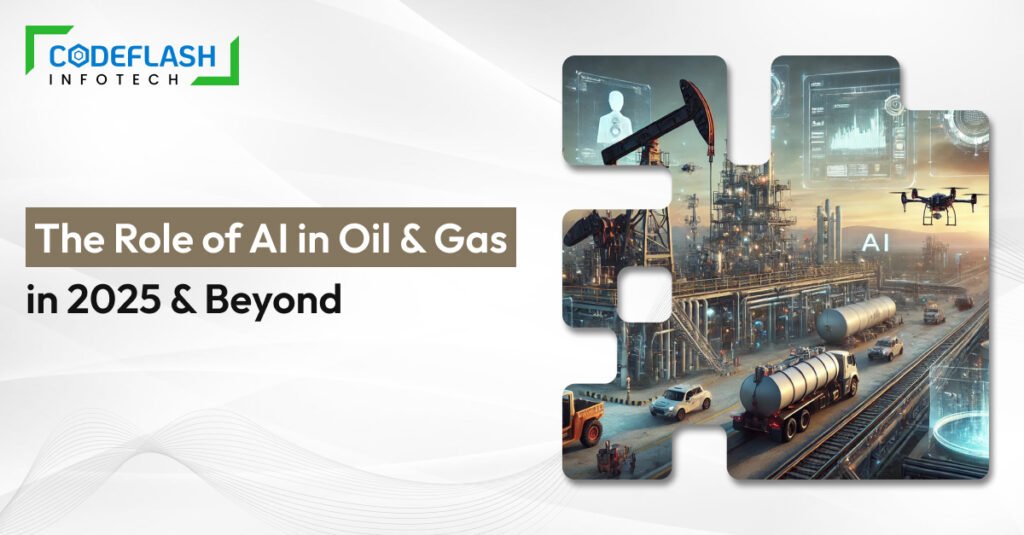
Machine Learning Integration: Building Smarter and More Intelligent Applications
16 MAY
In the fast-paced digital world, applications are evolving beyond static functionality to deliver dynamic, personalized, and intelligent experiences. The Machine Learning Integration is one of the key forces that is helping automate the financial system and have an extensive impact on it. The global machine learning market is growing steadily, projected to reach $113.10 billion in 2025 and further grow to $503.40 billion by 2030 with a CAGR of 34.80%.
With the help of ML Models in apps, developers can create comprehensive, self-improving applications that are highly valuable to users, helping them in their day-to-day lives across various sectors, including healthcare, finance, e-commerce, and more.
The Power of ML in App Development
ML in Software Development is no longer just a futuristic concept. Currently, it plays a crucial role as an essential component in applications’ intelligent behavior. ML algorithms enable applications to learn from data, identify patterns, make intelligent predictions, and make decisions independently. On the one hand, ML helps improve users’ experience by providing valuable suggestions, while on the other hand, it assists in enhancing organizational productivity through fraud prevention.
The conventional procedural approach in application development was based on rules; however, ML works on an adaptive rule system. This means that applications can evolve based on user behavior, new data, changing conditions critical for creating a competitive advantage, or for businesses that focus on innovation.
Want a Custom ML Strategy for Your App? Email us
Automation with ML: Smarter Workflows and Processes
Automation with machine learning (ML) is revolutionizing business operations. The use of ML within apps can also enable several highly dependent and time-consuming processes to be handled autonomously. For instance, in customer support, with the help of NLP, chatbots can answer questions and resolve disputes on their own, enhancing their performance over time.
Additionally, in the field of logistics and supply chain management, such applications of ML can help design efficient delivery routes, predict customer demand, and prevent downtime. Using information processing automation, employees eliminate mistakes, save money, and accomplish more in a day.
AI in Healthcare: Personalized and Predictive Solutions
The integration of AI in Healthcare has led to groundbreaking advancements. Today, with the use of machine learning (ML), several symptoms of diseases can be identified by examining the impact of diseases on the human body, medical images, and personal records, as well as genetic data. For instance, apps developed for remote patient care leverage machine learning (ML) for continuous monitoring of clinical signs or to notify physicians in real-time in case of adverse events.
Additionally, healthcare apps can be tailored to a specific user’s behavior and their records, including attendance and results. It not only aims to enhance the quality of healthcare delivery but also relieves the pressure on doctors and other healthcare practitioners. A few examples of its application are diagnostic tools, virtual assistants, and medical management devices.
AI in E-commerce: Enhancing Customer Experience
E-commerce platforms have seen dramatic improvements with the integration of AI in E-commerce. In this case, artificial intelligence enables companies to analyze consumer locations and preferences, providing clients with shopping experiences tailored to their needs and wants. From recommending a product to someone or possibly adjusting the price one is willing to offer for a commodity, search results and clicks are also powered by Machine learning algorithms.
Other uses of AI include chatbots and voice assistants, as well as Augmented Reality fitting rooms, where shoppers can interactively and virtually shop. Furthermore, ML models are used to identify issues in customer feedback and reviews with recurring patterns that help in upgrading products and services, as well as optimizing inventory.
Explore how we’ve transformed businesses across healthcare, finance, and e-commerce with smart, ML-integrated applications. Please view our portfolio
ML for Finance Apps: Security and Smart Insights
ML for Finance Apps has introduced more innovative ways to manage, save, and invest money. With the help of ML for financial applications, it can analyze the spending habits of a particular user and provide suggestions for financial planning, as well as detect fraud in real-time. Robo-advisors, for example, utilize machine learning (ML) to provide personalized investment strategies tailored to market trends and individual risk profiles.
Financial institutions and financial technology companies have recognized the importance of using ML in various fields, such as credit scoring, loan approval, and customer service. These apps become an excellent source of information, as they provide users with accurate details on the finances they make and the posts they encounter.
Key Steps to Implement Machine Learning Integration
Successfully integrating machine learning (ML) into your applications requires a strategic approach. Here are the key steps:
- Define the Problem: Identify the challenge or goal the ML model should address, such as fraud detection, customer retention, or predictive maintenance.
- Collect and Prepare Data: Data is the backbone of machine learning (ML). Gather relevant, high-quality data and clean it to remove inconsistencies or errors.
- Select the Right Algorithm: Depending on the use case, choose suitable machine learning models, such as classification, regression, clustering, or reinforcement learning.
- Model Training and Testing: Train the model using historical data and test its performance. Adjust hyperparameters for optimal results.
- Deployment: Integrate the trained model into your application using machine learning (ML) frameworks or APIs. Ensure the model is scalable and maintainable.
- Monitor and Improve: Once deployed, continuously monitor the model’s performance and retrain it with new data to maintain accuracy.

Benefits of Building Smarter Apps with ML
- Enhanced User Experience: Personalization enhances the applications by tailoring them to meet the specific needs and preferences of customers.
- Operational Efficiency: Automation reduces manual work within organizations and saves time, making procedures more cost-effective.
- Data-Driven Decisions: Real-time analytics and predictive insights lead to more innovative business strategies.
- Scalability: ML models improve over time, allowing apps to scale and evolve effortlessly.
- Competitive Advantage: Apps with machine learning (ML) integration stand out in crowded marketplaces by offering intelligent features.
Challenges and Considerations
Despite the advantages, integrating ML into applications comes with challenges:
- Data Privacy: The gathered and processed information of the customer should not violate the native privacy policies, such as GDPR or HIPAA, among others.
- Model Bias: Inaccurate or biased data can lead to unfair or incorrect outcomes.
- Complexity: Supervising, designing, and building machine learning (ML) models requires a specific skill set, as well as access to highly technical resources.
- Performance: Since the models implemented are machine learning (ML) models, they should not significantly impact the app’s performance.
Conclusion
App development through machine learning integration offers multiple opportunities to achieve innovation, along with improvements in automation and personalization. Better application technology, combined with advanced features, produces jointly improved results while delivering elevated user experiences across the medical, financial, and electronic commerce industries. The present integration of ML represents a process of developing solutions that adapt to users over time, while creating instantaneous, valuable insights from user data.
Contact us today to discuss how we can integrate machine learning into your next application.
Frequently Asked Questions
Table of Content
The Power of ML in App Development
Automation with ML: Smarter Workflows and Processes
AI in Healthcare: Personalized and Predictive Solutions
AI in E-commerce: Enhancing Customer Experience
ML for Finance Apps: Security and Smart Insights
Key Steps to Implement Machine Learning Integration






